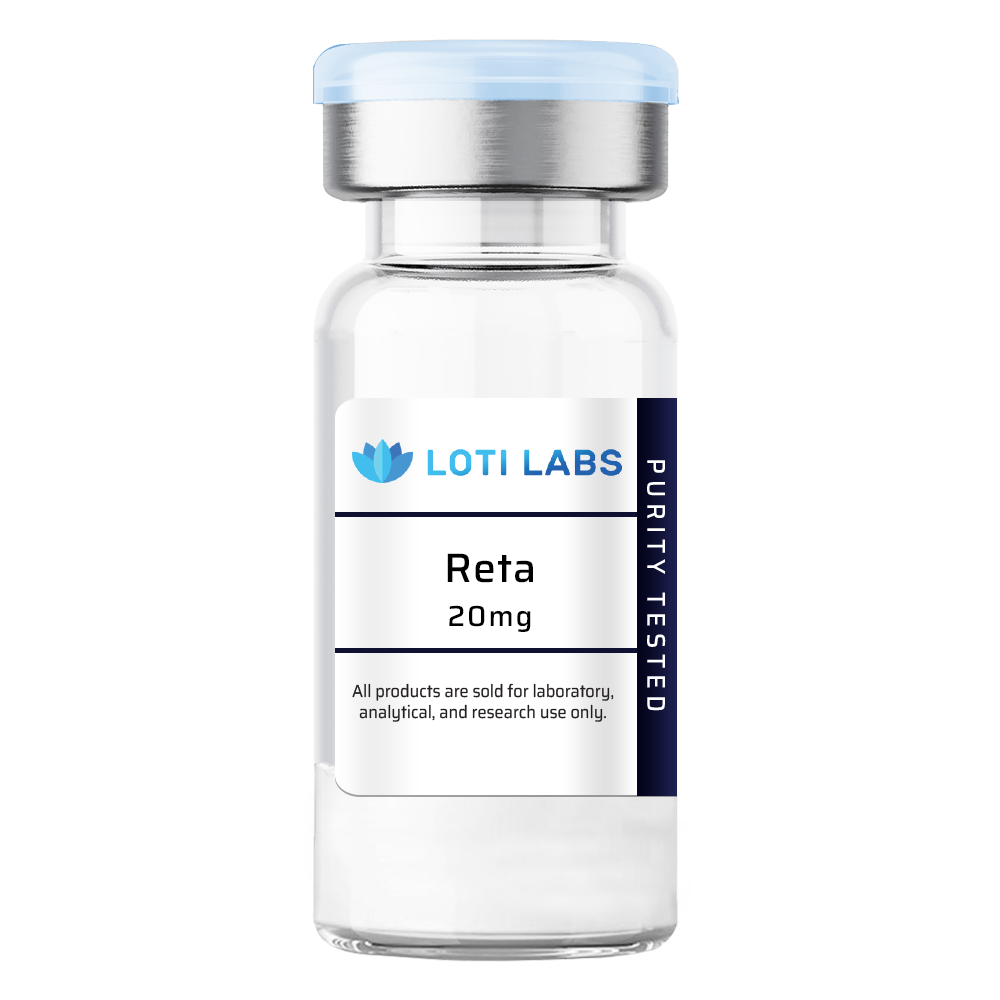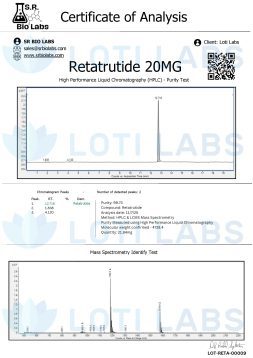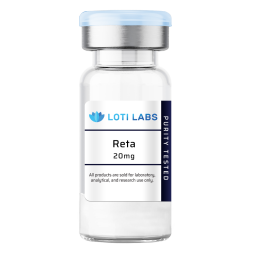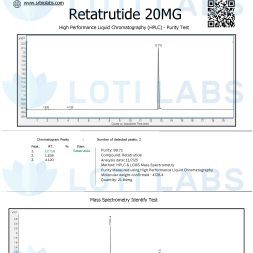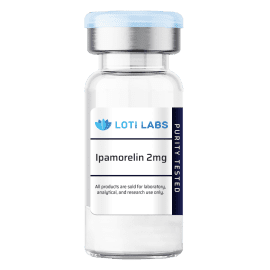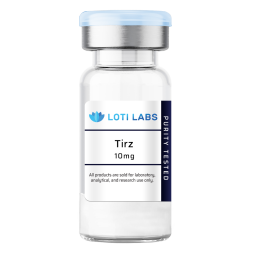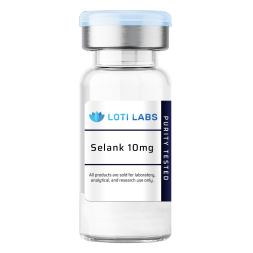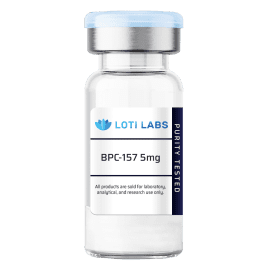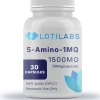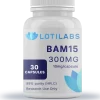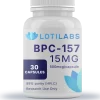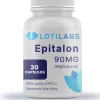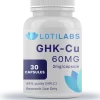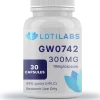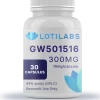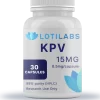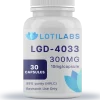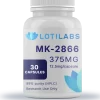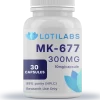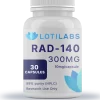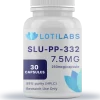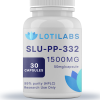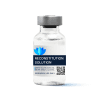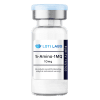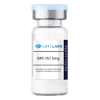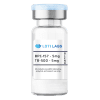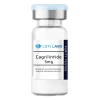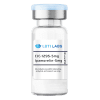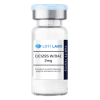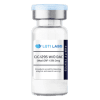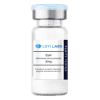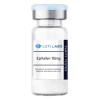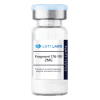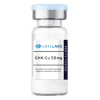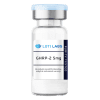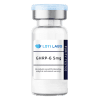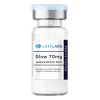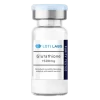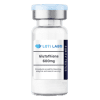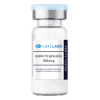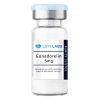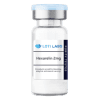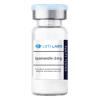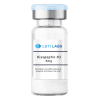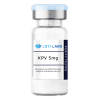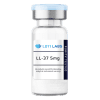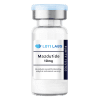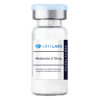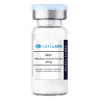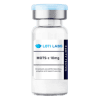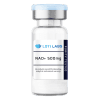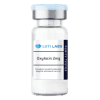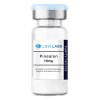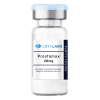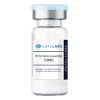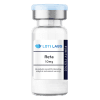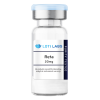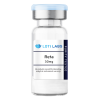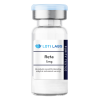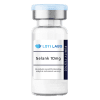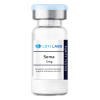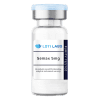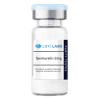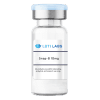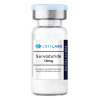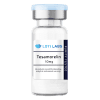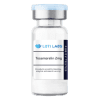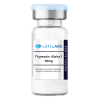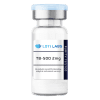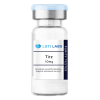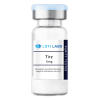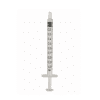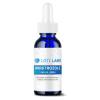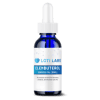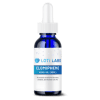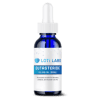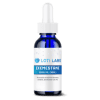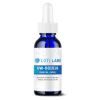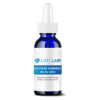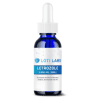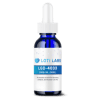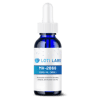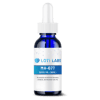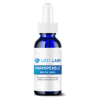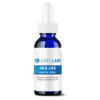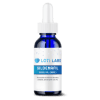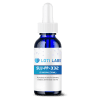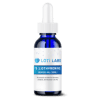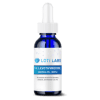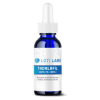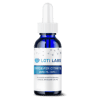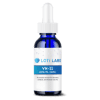Reta 20mg (GLP-3)
$299.99
You save
This product is intended as a research chemical only. This designation allows the use of this chemical strictly for in-vitro laboratory testing and experimentation. Human or veterinary use is strictly forbidden. This product is not a drug, food or cosmetic and may not be misbranded, mislabeled or misused as such.

Buy Reta 20mg for Advanced Metabolic Research at Loti Labs
Research into new triple glucagon receptor agonists has uncovered promising compounds for metabolic studies and Reta is one of them. This is a breakthrough in metabolic research applications where you can study a triple hormone receptor agonist that targets multiple pathways involved in glucose metabolism and energy expenditure.
Current clinical trials on this compound have generated a lot of interest in the research community especially on its application in metabolic health, obesity and related conditions. Research shows that Reta’s mechanism of action may give valuable insights on hormone receptor activity and metabolic pathway interactions.
For researchers who want to buy Reta 20mg for their laboratory studies, understanding the compound’s molecular properties, mechanism of action and handling requirements is crucial for successful experimental outcomes.
Molecular Structure of Reta
Reta is a triple hormone receptor agonist that targets glucagon like peptide 1 (GLP-1), glucose dependent insulinotropic polypeptide (GIP) and glucagon receptors. This triple gip/GLP-1/glucagon receptor approach is different from single target compounds being investigated.
Key Molecular Properties:
| Property | Specification |
|---|---|
| Amino Sequence | Triple hormone receptor agonist targeting GLP-1, GIP and glucagon receptors |
| Molecular Formula | C228H350N50O70 |
| Molecular Weight | 4731.33 g/mol |
| CAS Number | 2381089-83-2 |
| PubChem CID | SID 474492335 |
| Classification | Novel triple glucagon receptor agonist |
The compound’s large molecular weight and complex amino acid sequence reflects its design as a single peptide that can activate multiple receptor pathways at the same time. This molecular architecture allows researchers to study the integrated effects of multi-pathway activation in laboratory settings.
Research shows that the long half life of this compound makes it suitable for studies that require sustained receptor activity over a long period. The molecular structure is stable under proper storage conditions to give consistent results across multiple research applications.
Mechanism of Action
Reta works through a triple agonist mechanism that activates three different hormone receptor pathways. Research shows this may give more metabolic effects compared to compounds that target individual receptors.
GLP-1 Receptor Activity
The compound shows significant activity at GLP-1 receptors which regulates glucose levels and energy expenditure. Studies have shown that GLP-1 receptor agonist activity affects multiple metabolic pathways including glucose production and insulin sensitivity.
GIP Receptor Targeting
As a glucose dependent insulinotropic receptor agonist Reta interacts with gastric inhibitory polypeptide pathways. Research shows this mechanism contributes to glycemic control and may affect adipose tissue metabolism in experimental models.
Glucagon Receptor Engagement
The glucagon receptor agonist properties of this compound affects hepatic glucose production and energy metabolism. Preclinical studies suggest this activity may affect liver fat metabolism and overall metabolic health parameters.
Research shows that this triple agonist approach gives synergistic effects that are more than the sum of individual pathway activations. Studies on receptor activity show that simultaneous targeting of these pathways gives significant improvements in multiple metabolic parameters.
Research Studies and Clinical Evidence
Current clinical studies on Reta have generated valuable data on its research applications and mechanisms. The compound has progressed through multiple phases of investigation and has generated a lot of research interest.
Phase 2 Clinical Trial Results
Phase 2 clinical trials showed dose dependent responses across multiple metabolic parameters. Research shows that participants who received higher doses (8-12mg) had significant improvements with 79-93% achieving meaningful metabolic changes. These findings have guided current research protocols and dosing strategies.
Key research observations include:
- Weight reduction vs placebo group
- BMI changes
- Waist circumference reduction
- Cardiovascular risk factors changes
- Blood pressure changes
Ongoing Phase 3 TRIUMPH Trials
Current Phase 3 TRIUMPH trials are investigating optimal research protocols including potential formulations for enhanced research applications. These clinical studies are looking at various dosing strategies and their effects on multiple endpoints.
Research protocols in these trials include:
- 48 weeks observation period
- Multiple dose level studies
- Comprehensive safety profile assessment
- Secondary endpoint evaluation
- Comparison with existing compounds
Research Applications Beyond Weight Studies
Clinical proof from various studies suggests potential applications in multiple research areas. Studies have looked at effects on:
- Liver Disease Research: Studies on how the compound reduces liver fat and addresses fatty liver disease
- Metabolic Health Parameters: Research on insulin resistance and glucose metabolism### Cardiovascular Research: LDL Cholesterol
Body Composition: Adipose Tissue
At least one dose level showed activity across multiple endpoints, more research needed to determine optimal protocol.
Storage and Handling
Proper storage and handling of Reta is crucial to maintain compound integrity and research results. The substance requires specific conditions to preserve molecular structure and biological activity.
Storage Requirements
| Parameter | Specification |
|---|---|
| Temperature | 2°C to 8°C (36°F to 46°F) |
| Light Protection | Store in original packaging, protect from light |
| Humidity | Controlled environment, avoid moisture |
| Temperature Limits | Never freeze; avoid exposure above 30°C |
Handling Protocols
Researchers must maintain refrigerated storage conditions throughout the compound’s lifecycle. Temperature fluctuations can compromise molecular integrity and affect experimental outcomes.
Follow proper handling procedures to ensure compound stability:
- Use personal protective equipment
- Minimize ambient temperature exposure
- Follow institutional safety guidelines
- Maintain cold chain during transport
- Document storage conditions for QA
Research Observations
Studies have shown mild-to-moderate GI responses during administration. Consider in your research protocol.
The safety profile from clinical trials is useful for researchers planning lab studies. Understand these patterns to design and monitor your protocol.
Buy from Loti Labs
Loti Labs offers high quality research compounds for lab use. They are committed to quality assurance and research compliance, making them the best source to buy Reta 20mg for your research.
Research Use Only
All products sold by Loti Labs are research chemicals only. Research use only. Not for human consumption or veterinary use. Not a substance for human use, food or cosmetics and may not be misbranded, mislabeled or misused as such.
This research only designation ensures compliance with regulatory requirements and maintains scientific integrity. Researchers must follow institutional guidelines and regulatory frameworks when purchasing and using these compounds.
Quality Assurance and Testing
Every batch of compounds sold by Loti Labs is tested by a third party using High-Performance Liquid Chromatography (HPLC) to ensure product purity and accuracy. This comprehensive testing protocol gives researchers confidence in their materials.
Testing Includes:
- Purity verification by HPLC
- Identity confirmation by spectroscopic methods
- Contamination screening
- Stability testing under storage conditions
- Certificate of analysis with each batch
Shipping
Loti Labs ships same day for orders placed before 1 PM EST, Monday through Friday. Orders placed after 1 PM EST or on weekends ship the next business day. We maintain cold chain during shipping to preserve compound integrity. Specialized packaging to keep temperature stable during delivery.
Satisfaction Guarantee
30 day satisfaction guarantee on all products. Researchers can return any unopened products for a full refund of the purchase price of unused materials. We stand behind our products.
Research Applications and Future Directions
Current research suggests many applications for Reta in research. The triple agonist mechanism provides researchers opportunities to study complex metabolic interactions.
Metabolic Research Applications
Research indicates applications in:
- Energy Metabolism: Energy expenditure and metabolic rate
- Glucose Homeostasis: Glycemic control and insulin sensitivity
- Lipid Metabolism: Liver fat regulation and adipose tissue function
- Hormone Interactions: Multi-pathway receptor activity
Comparative Research
Researchers can use Reta compared to other compounds to understand mechanism differences. Studies comparing single receptor agonists to this triple agonist approach will provide valuable insights into metabolic pathway interactions.
The small sample size of current studies provides opportunities for researchers to add to the scientific understanding of this compound class.
Research Considerations
When designing studies with Reta consider:
- Appropriate experimental model for compound administration
- Proper controls and comparison groups
- Adequate observation period for meaningful results
- Institutional review board requirements
- Documentation of research protocol and results. Research shows the compound’s long half life allows for flexible dosing in experimental protocols, but researchers must design studies to account for this pharmacokinetic property.
Conclusion
Reta is a game changer in metabolic research, a triple hormone receptor agonist with unique mechanisms of action. The compound’s simultaneous targeting of GLP-1, GIP and glucagon receptors provides valuable research opportunities to study complex metabolic interactions.
If you need to buy Reta 20mg for your research, Loti Labs offers high quality compounds with comprehensive quality assurance. They are committed to research compliance, third party testing and customer satisfaction.
The growing body of research on this compound suggests a lot of potential to advance our understanding of metabolic pathways and hormone receptor interactions. As more clinical data becomes available, researchers have unprecedented opportunities to contribute to this area of research.
To purchase Reta 20mg for your research, contact Loti Labs today and experience their commitment to science and research integrity. They support the research community to ensure you get the highest quality compounds for your research needs.
References
- Jastreboff, A. M. et al. Triple-hormone-receptor agonist Reta for obesity—a phase 2 trial. N. Engl. J. Med. 389, 514–526 (2023).
- Naeem, M., Imran, L., & Banatwala, U. E. S. S. Unleashing the power of Reta: a possible triumph over obesity and overweight: a correspondence. Health Sci Rep. 7, e1864 (2024).
- Sanyal, A. J. et al. Triple hormone receptor agonist Reta for metabolic dysfunction-associated steatotic liver disease: a randomized phase 2a trial. Nat Med 30, 2037–2048 (2024).
- The Care Pharmacy. Reta: Uses, Side Effects, Availability and More. Available at: https://thecarepharmacy.com/reta-uses-side-effects-availability-and-more (Accessed 2024).5. Food and Drug Administration (FDA). Reta FDA Approval Status. Drugs.com. Available at: https://www.drugs.com/history/reta.html (2024).
- Coskun, T. et al. LY3437943, a novel triple GIP, GLP-1, and glucagon receptor agonist for glycemic control and weight loss: from discovery to clinical proof of concept. Cell Metab. 34, 1234–1247 (2022).
- Rinella, M. E. et al. A multi-society Delphi consensus statement on new fatty liver disease nomenclature. Ann. Hepatol. (2023)
Check out these references for more information on Reta development, clinical trials and research.
| Weight | .03125 lbs |
|---|
